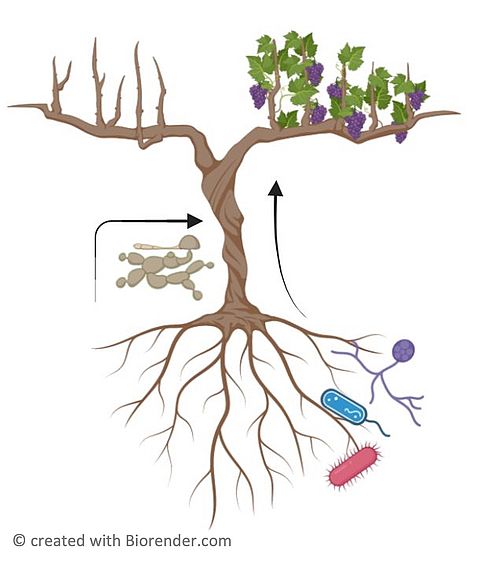Project members
Abstract
Climate change with its more extreme weather conditions have also reached viticulture in the EUCOR region. On the one hand, drought, often in combination with heat impact yield and quality, but also promotes novel wood diseases (Grapevine Trunk Diseases, GTDs) that can cause even complete breakdown of the plant at the peak of its productivity. Resilience breeding has been a successful strategy to contain Downy and Powdery Mildew in a sustainable manner. However, the time frame (several decades) is too slow to come up with a solution for climate resilience. However, similar to the human-gut microbiota, plant resilience is strongly dependent on the interaction between the root and the microbial communities in the rhizosphere. Rhizomicrobiome engineering has, therefore, great potential for climate resilience management. For viticulture, the productive genotypes are grafted on rootstocks to contain Phylloxera. Thus, the resilience of the graft depends on the interaction between rootstock and scion. However, very little is known about this interaction.
- Can engineering of the rootstock microbiome improve resilience to GTDs?
- How does the genotype of the rootstock act on the resilience of the graft?
- Do rhizosphere microbes act locally (entering the aerial parts) or systemically (sending signals or stimulating plant immunity) against GTD fungi?
Publications
Quick Links
Social Media

